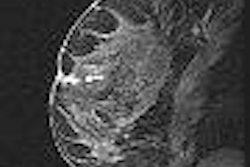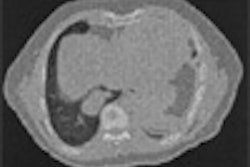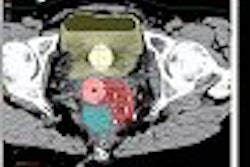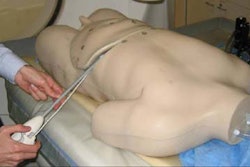Using ultrasound as a primary method to guide hip aspirations and injections is an effective technique that's underutilized, according to research published in the Journal of Vascular and Interventional Radiology.
"The absence of radiation and relatively short procedure time of ultrasound-guided hip injections are favorable factors to both the authors' referring clinician population as well as the patients," wrote a study team from the Hospital for Special Surgery of Weill Medical College of Cornell University in New York City.
The researchers performed a retrospective review of an ultrasound database, finding 358 adult hip aspirations/injections from October 2000 through October 2004. All procedures were performed using a longitudinal, anterior approach and without the use of a needle guide (Journal of Vascular and Interventional Radiology, August 2005, Vol. 16:8, pp. 1121-1123).
The majority of examinations were performed using a Sonoline Elegra unit (Siemens Medical Solutions, Malvern, PA), with a medium-frequency transducer (5.0- or 7.5-MHz linear transducer) or a curved linear 3.5-MHz transducer. Sector format capability was occasionally employed to maximize field-of-view, according to the researchers.
"In general, we find it advantageous to optimize our scan technique before needle placement," the authors wrote. "Use of some of the specialized features of the scanner, such as tissue harmonics and image compounding, may be helpful in this regard."
All injections were performed by one of two attending musculoskeletal radiologists or by board-certified radiology fellows under direct attending supervision. Of the procedures, 97% of the injections/aspirations were performed on native hips, with only 11 completed to exclude infection in patients with hip arthroplasties. Ninety-eight percent of the patients received a unilateral procedure.
There were no reported cases of inadvertent vascular or femoral nerve punctures, as determined by a brief patient observation, the dictated report of the procedure, patient response logs, and follow-up with the referring clinician.
Ultrasound has become the primary imaging modality to guide for adult hip injections/aspirations by a large number of their referring clinicians, according to the study team.
"We find that the absence of radiation and relatively short procedure time of ultrasound-guided hip injections are favorable factors for our referring clinician population as well as the patients," the authors wrote. "Performing these interventions from an anterior longitudinal approach can result in a reliable intra-articular needle placement while avoiding the neurovascular bundle."
By Erik L. Ridley
AuntMinnie.com staff writer
September 27, 2005
Related Reading
Ultrasound-guided pancreatic biopsy yields effective results, June 22, 2005
Ultrasound-guided biopsy identifies outer prostate benign hyperplasia, April 15, 2005
US-guided core biopsy establishes malignancy in renal masses, August 22, 2002
Success of ultrasound-guided biopsy rests on patient positioning, March 20, 2002
Lidocaine decreases pain of ultrasound-guided needle biopsy of the prostate, February 11, 2002
Copyright © 2005 AuntMinnie.com



















